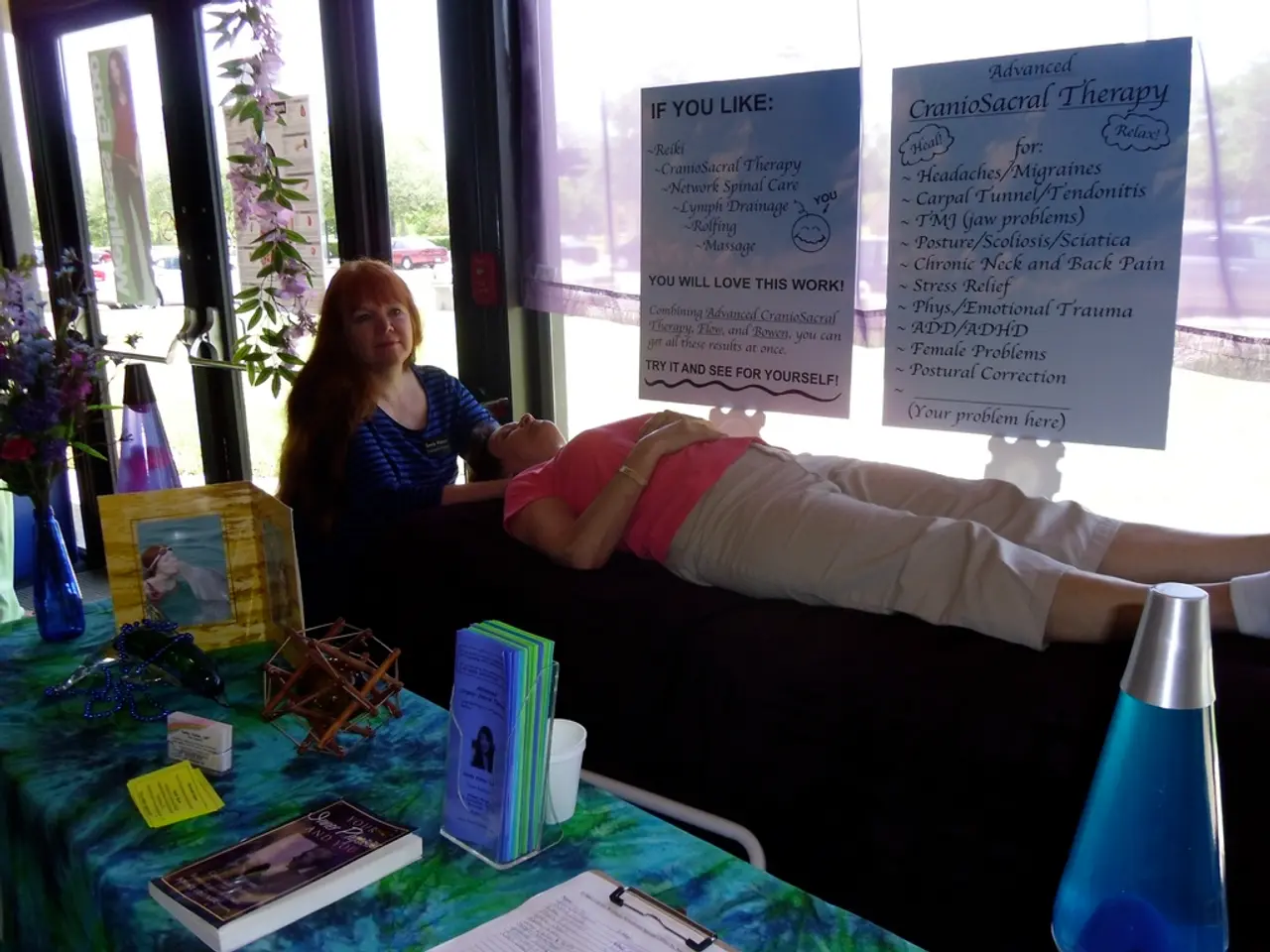Utilizing Relaxation Strategies for Alleviating Pain from Carpal Tunnel Syndrome
Carpal Tunnel Syndrome (CTS) is a common condition that causes pressure on the median nerve, running from the forearm to the hand, through the carpal tunnel in the wrist. Symptoms include pain or aching in the hand, wrist, and forearm, tingling or numbness in the fingers, weakening grip strength, and difficulty with fine motor skills.
Fortunately, there are several relaxation techniques that can help alleviate the pain and discomfort associated with CTS. Here are some effective methods supported by recent research:
Myofascial Release Massage
Devices like CarpalRx automate this technique, mimicking a therapist’s fingers to knead the wrist area, breaking down adhesions and scar tissue around the median nerve. This reduces inflammation and nerve compression, improving symptoms significantly with daily 15-minute sessions over weeks [1].
Nerve Gliding Exercises
These exercises promote movement of the median nerve within the carpal tunnel, preventing adhesions and reducing inflammation, thereby restoring nerve function and alleviating symptoms [2].
Manual Therapy
Manual therapy includes soft tissue mobilization and joint manipulation to relax muscles and reduce tension around the wrist, which can relieve pain and improve wrist function [2].
Therapeutic Massage (Deep Tissue Massage)
Targeting forearm, wrist, and hand muscles can reduce muscle tension, break down scar tissue, enhance blood flow, and foster relaxation. A calming environment with soothing music and aromatherapy can enhance the massage's relaxing effects [3][4].
Yoga-Based Interventions
Yoga may reduce wrist pressure and improve nerve function, while also addressing overall posture and stress factors [2]. Specific poses like "The Prayer Pose" and "The Reverse Prayer Pose" focus on stretching and opening the wrists, which may be beneficial for CTS.
In addition to these techniques, ice packs can help reduce inflammation in acute flares, night splinting keeps the wrist in a neutral position and reduces nerve pressure during sleep, and activity modification can help reduce repetitive strain and allow healing.
Integrating these relaxation techniques into your daily routine can be a valuable tool in managing CTS pain and promoting overall well-being. However, if you suspect you have CTS, it's essential to seek a healthcare professional for a proper diagnosis and treatment plan. Professional carpal tunnel treatment solutions may be sought at a specialized clinic for comprehensive treatment options aimed at addressing the underlying causes of the condition.
References: - CarpalRx and myofascial massage therapy with 97% success rate in studies [1]. - Nerve gliding, manual therapy, and yoga-based interventions from physiotherapist’s guide [2]. - Benefits of deep tissue massage and creating a relaxing massage environment for CTS [3][4]. - Massage: Massaging hand, wrist, and forearm with gentle circular motions or a massage ball can help relax muscles and alleviate pain associated with carpal tunnel syndrome. - Guided Imagery: Closing eyes and visualizing a peaceful, relaxing environment can help reduce stress and tension in muscles, providing relief from carpal tunnel syndrome pain. - Progressive muscle relaxation involves tensing and then releasing specific muscle groups to promote relaxation, which can help alleviate pain associated with carpal tunnel syndrome. - Hand and Wrist Stretches: Gently stretching fingers, wrists, and hands can improve flexibility and reduce stiffness, offering relief from carpal tunnel syndrome symptoms. - Deep breathing exercises can help lower stress levels and reduce tension in muscles, including those in the hand and wrist, to provide relief from carpal tunnel syndrome pain. - Yoga: Practicing yoga can promote relaxation, improve flexibility, and strengthen hands and wrists, offering potential relief from carpal tunnel syndrome symptoms. - It's important to remember that while relaxation techniques can provide temporary relief, persistent or worsening symptoms should be addressed by a healthcare professional. - If you suspect you have carpal tunnel syndrome, seek a healthcare professional for a proper diagnosis and treatment plan.
- Science has recognized several methods to manage Carpal Tunnel Syndrome (CTS) pain, including myofascial release massage, nerve gliding exercises, manual therapy, therapeutic massage, yoga-based interventions, and other relaxation techniques.
- Myofascial release massage, as automated by devices like CarpalRx, helps break down adhesions and scar tissue around the median nerve, improving symptoms significantly over weeks.
- Nerve gliding exercises promote the movement of the median nerve within the carpal tunnel, preventing adhesions, reducing inflammation, and restoring nerve function.
- Therapeutic massage, particularly deep tissue massage, targets forearm, wrist, and hand muscles to reduce muscle tension, break down scar tissue, enhance blood flow, and foster relaxation.
- Yoga-based interventions can reduce wrist pressure, improve nerve function, address overall posture, and reduce stress factors, potentially alleviating symptoms of CTS.
- In addition to these techniques, mental health plays a crucial role in pain management. Guided imagery, deep breathing exercises, and progressive muscle relaxation can help reduce stress and tension in muscles, offering relief from CTS pain.




